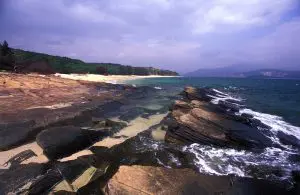Peng Chau has echoes of old south China, with paths along coastlines and through farmland.
Though Peng Chau has similarities to Cheung Chau, it’s smaller, and quieter – with a more rural, perhaps more introverted character. Rather like Cheung Chau, the main village is in the centre of the island, and there are hilly areas with trails to the north and south.
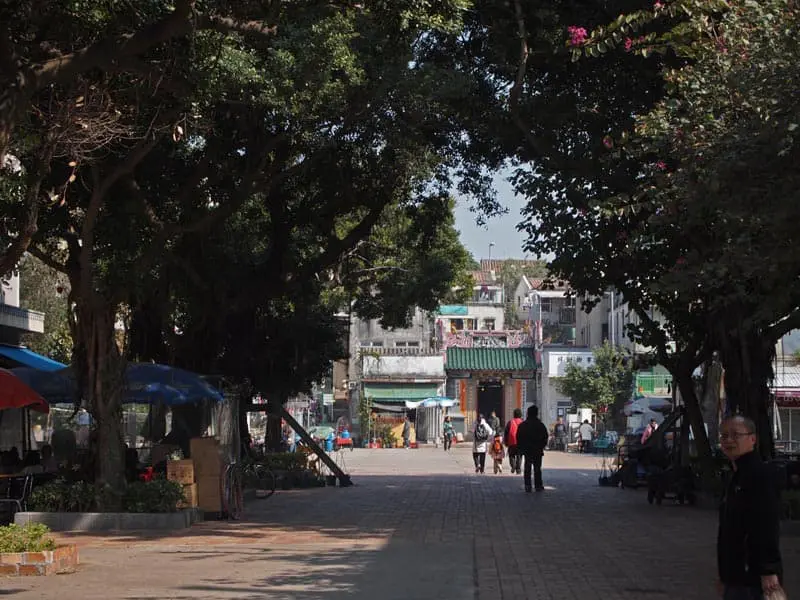
Ferries to Peng Chau arrive on the west coast of the island. From the pier, a broad avenue leads to a Tin Hau Temple, which is on the narrow main street.
Rather than head straight for the village centre, you might first turn left, to north Peng Chau. You pass housing blocks along the waterfront. There are also ruins of old buildings, which were once part of the largest match factory in southeast Asia.
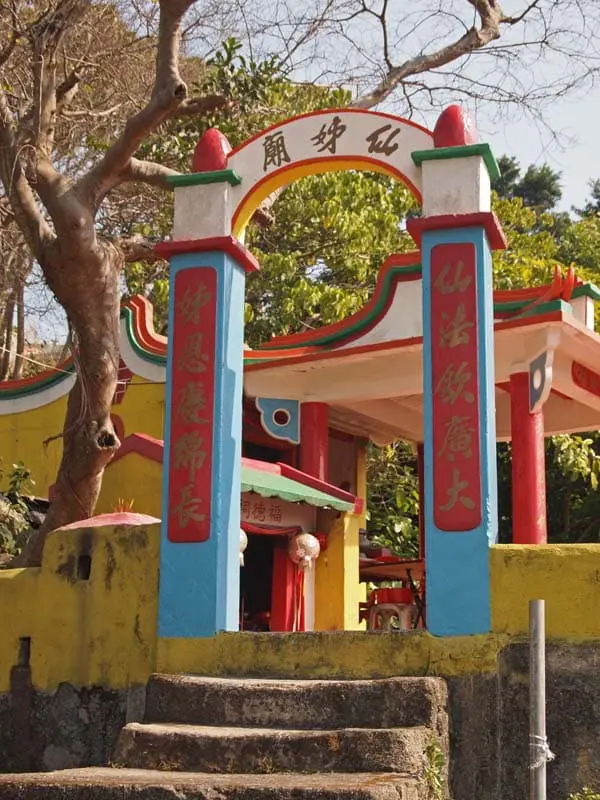
There’s also a cluster of three small temples. The most obvious of them is the shrine to the Seventh Sister, which is wonderfully colourful – as the Seventh Sister is associated with the colours of the rainbow. The other temples are dedicated to the Monkey King, and the Buddhist Guan Yin.
A little past the temples is a bridge to an islet. Across this, you can walk onto a narrow shingle beach. Marine biologists have identified 35 coral species in the waters here: a remarkable tally for western Hong Kong, which is influenced by the Pearl River, and away from the more oceanic eastern waters. In the past, these corals, plus seashells, formed the basis of a substantial lime industry on Peng Chau.
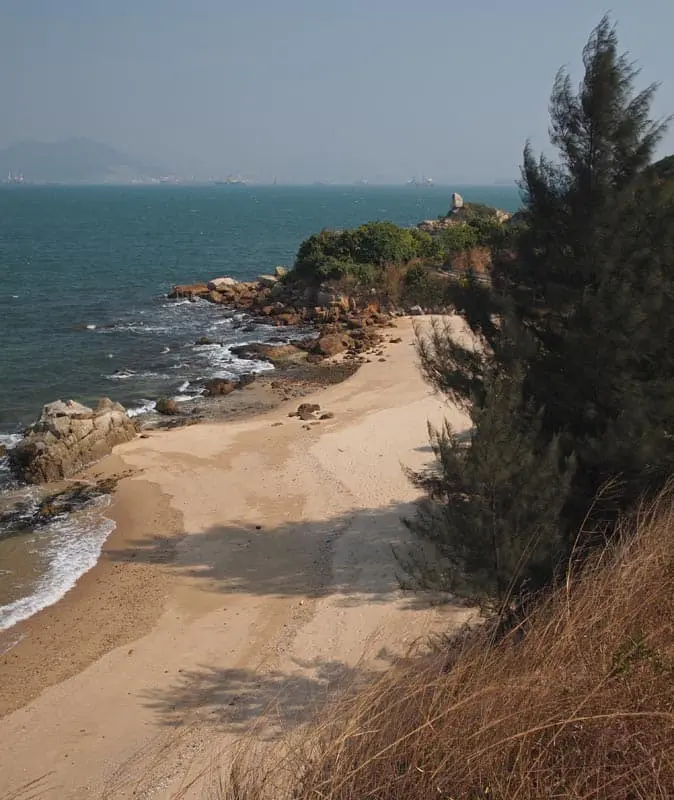
There’s little more to the islet, so head back to the shore of Peng Chau. Here, a coastal trail skirts above the rocky trail. Soon, the coast of Peng Chau seems wild, and almost remote – but Hong Kong Disneyland is in view, only a short way across the sea. The path drops past a narrow beach, then climbs a short flight of steps.
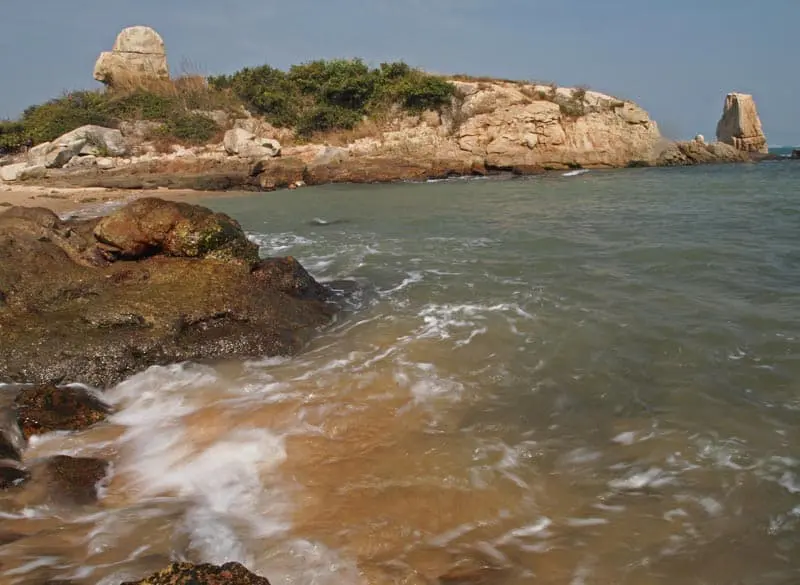
Another flight of steps drops down to a tiny beach, linked to a rocky knoll capped by a tor – Old Fisherman Rock.
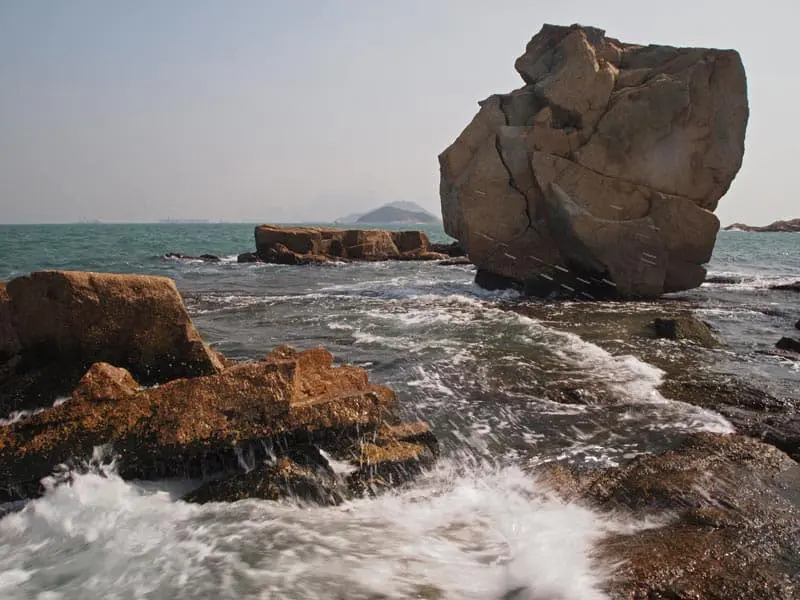
This is a fine place to while away some time; you can walk around the shore of the knoll, and will soon find another tor, perched on a wave cut platform washed by waves.
To head onwards, you can head further up the path, following more steps upwards. There’s a junction at the top of the slope. Turn right, and you are on a path that winds down into a small valley, passing bamboo stands, and farms with lychee, banana, guava and jackfruit trees. [There are some signposts here, for a Family Trail, but most are so faded they are hard to read.]
The path continues gently down, passing small fields and farmhouses, and arrives at the deep inlet known as Tung Wan – east bay, which is set between the peninsulas of north and south Peng Chau. The main village is at the head of the bay. Almost in the centre of the buildings fringing the bay is a red-brick temple dedicated to Lung Mo, the Dragon Mother.
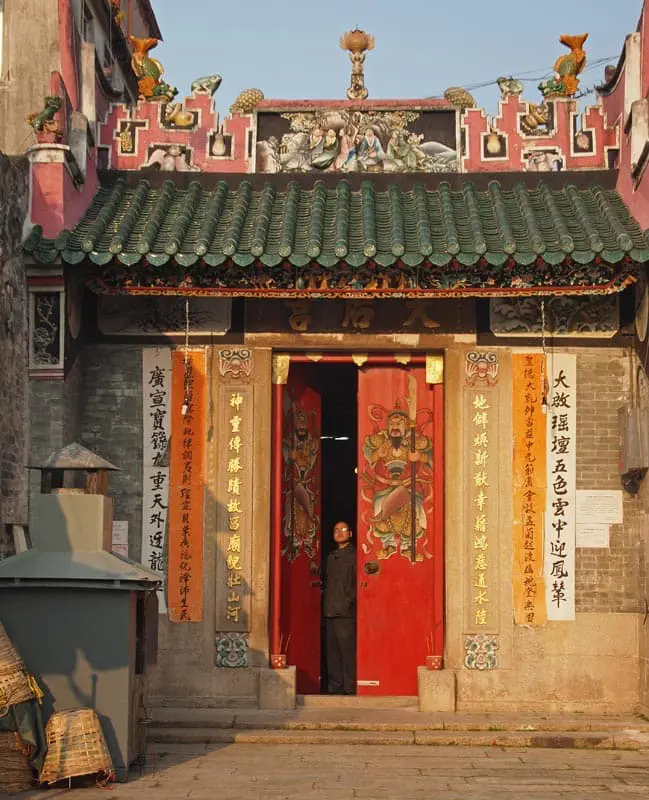
Behind the temple are narrow streets that lead to the main street: Wing On Street, the Street of Eternal Peace. The Tin Hau temple is the main building along this street. Just outside it is a stone tablet, with Chinese characters, dating from the Qing dynasty. According to this, there was a decree to the effect that when soldiers were chasing pirates, they were not permitted to commandeer islanders’ fishing boats.
Walk south along the main street, and you will soon find it almost tunnels between the buildings. Stores and small restaurants – including one with Vietnamese food – are packed tightly together, and face across a thoroughfare barely wider than a city footpath.
The main street ends near the foot of a hill. From here, there are various paths, including at least one signposted path to Finger Hill, which at 95 metres is the highest point on the island. A flight of steps leads up from the western flank of the hill, and reaches a vantage with 360° views over much of Peng Chau, nearby Lantau and Kau Sai Chau, and east to Hong Kong Island.
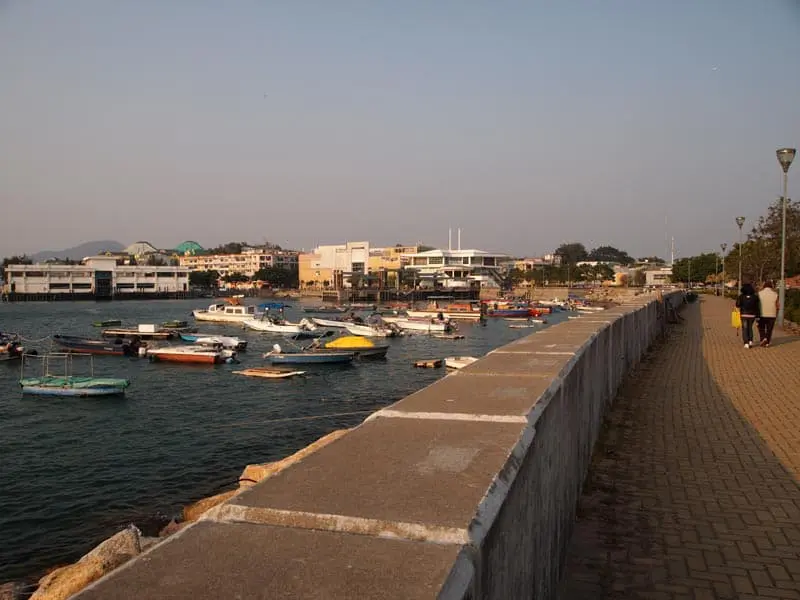
Back down in the village, you might also stroll along a waterfront path to the south of the ferry pier. This runs atop a sea wall, built to protect Peng Chau housing from storms: it may be effective at this, but has robbed the village here of its seafront character. Even so, it makes for a pleasant stroll, before turning back towards the pier, and maybe stopping for refreshments at one of the handful of nearby small restaurants and coffee shops.
Getting There
Sun Ferry operates a service between Hong Kong Island and Peng Chau.
For more info on the greener side of Peng Chau – including exploring the island – see the Green Peng Chau Association website.















